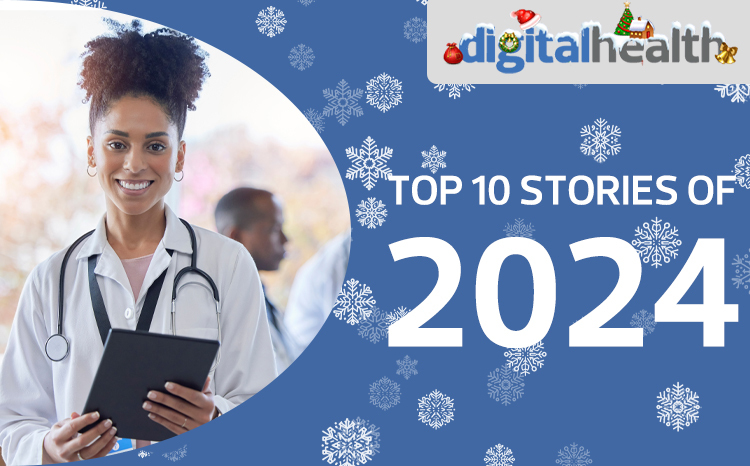WoHIT is me
- 22 March 2010
 Last week, the World of Health IT conference in Barcelona opened its doors to more than 2,500 visitors.
Last week, the World of Health IT conference in Barcelona opened its doors to more than 2,500 visitors.
The event was, for the first time, coupled with the high level ministerial conference on eHealth; and one of its highlights was the signing of a new eHealth declaration by the European Commission.
This enhanced the Commission’s commitment to a “new era of eHealth” and to practical action to make it happen. The declaration set the tone for the remainder of the conference, which also stressed the importance of interoperability and the need to prepare for Europe’s ageing population.
Think Europe
The declaration built on previous Commission pledges, such as the Potorož Declaration, signed in Slovenia in 2008, which recognised the need to focus on legal and market issues.
Ilias Iakovidis, deputy head of ICT for Health at the European Commission’s DG Information Society and Media, told E-Health Europe: “The declaration goes one step further and commits the EU member states to take very concrete steps on interoperability and market issues.
“We need to create a single market in the healthcare sector by having common standards, for example to identify the same patient with all EU countries, to identify patients’ needs and authenticate a doctor so that they would be able to act cross-border.”
Steve Lieber, president of Healthcare Information Management and Systems Society, felt the new declaration was an important step. “The declaration was a real success, it was an opportunity to make a really strong statement about the direction that the EU should pursue in terms of eHealth,” he said.
However, he acknowledged: “Now the difficulty is understanding that agenda and how we’re going to make it real and translate it into real action.”
Act local
Outside the conference, the feeling was that while commitment from the Commission is useful, real work can only be done at a more local level.
Jonathan Edwards, vice president of research at Gartner, said: “There is definitely some value in getting ministers to publicly acknowledge the importance of e-health.
“A problem with these declarations is that they talk a lot about coordination and collaboration among European countries, reflecting the remit of the EU whose authority in healthcare is limited to cross-border activities, whereas the real value of e-health will come from coordination at the local level.”
Martin Denz, president of EHTEL, the international e-health forum, echoed this view, adding that: “We need to look at the level that we can start doing real things with eHealth and that is at regional level.
“The declaration has tremendous value because it says it is now politically correct to talk about these problems. But the Commission doesn’t know who has done what or what other stakeholders are doing and so they cannot help with that; they have never managed to get down to that level.”
Interoperability in action
In the exhibition hall, it was clear that suppliers and organisations were already focused on finding ways to join up systems.
For example, the interoperability showcase was continually busy with delegates, who were able to act as fictional patients and follow the data generated by their diagnosis and treatment through different products that became links in a coordinated chain of care.
The Integrating the Healthcare Enterprise showcase also involved the Continua Alliance, a non-profit open industry coalition that is working with IHE to establish a system of integrated personal health solutions.
Continua showcased its first end-to-end connected health solution, based on Continua architecture standards, in which data from a Bluetooth enabled wireless pulse oximeter from Nonin was sent to a PC manager running the Vignet connected health services platform.
From there, it was uploaded to an IBM server using the Continua wireless area network interface standard, from which it could be sent to other service providers, including healthcare facilities and personal health record services.
Chuck parker, chief executive of the Continua Alliance said: “The fact that we can demonstrate interoperability with two companies is really a huge step. It shows that we are finally beyond talking about it, we have the products certified and we can demonstrate that capability.”
However, Parker argued that the biggest hindrance to interoperability was not technical problems, but the lack of awareness about its importance.
“There has still never really been a big enough awareness campaign and that still needs to be put in place in a way that makes organisations and health professionals know that this can be done.”
Marc Lange, secretary general at EHTEL, agreed. “The word ‘interoperability’ has no value to health professionals, what has value is the word ‘collaboration’ – exchanging information and sharing information.
“For many interoperability is a dirty word, for most stakeholders it’s about sharing information and they don’t care whether a company has this platform or that platform, they just want to be able to do it and be able to understand the business benefits.”
Preparing for an ageing population
Another big theme of the show was that healthcare needs to drastically change in order to support an ageing population, living with a higher burden of chronic disease.
IHE showcased its consumer health range, which includes discreet and easily worn devices as part of an end-to-end solution that monitors several vital signs. Meanwhile, a number of companies launched products aimed at the growing telehealth and consumer healthcare markets.
Tunstall showed telehealth solutions that are already widely used in the UK. iSoft announced a partnership with the Swiss firm, Medic4all, to market new devices and monitoring services.
And Tieto showed its Digital Citizen Services, which has been rolled out in Espoo in Finland, to allow citizens with chronic diseases to be more involved in the healthcare process. They can see healthcare professionals’ comments on tests and recommendations for the next steps in their care.
One thing that stood out from all the conference streams and exhibitor stands was that the patient is going to have a far greater role to play in the future and that systems and services need to be able to support this in the most effective way possible.
Iakovidis said: “What we’d like is to digitise and connect different points of care and give patients tools to interact in a connected environment. EHealth is here to change and innovate in difficult times, but in order to handle challenges in future healthcare, Europe must do more than just digitise paper.”





